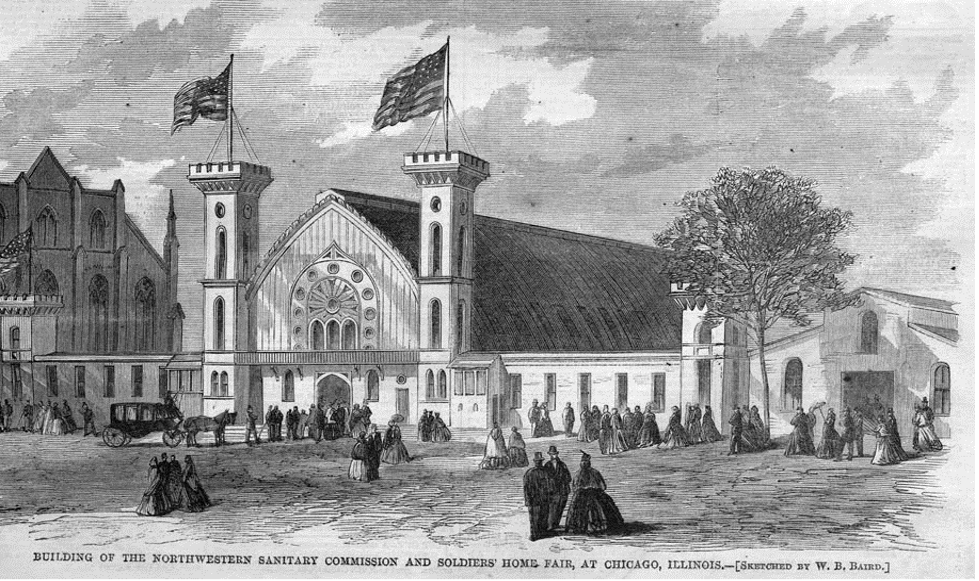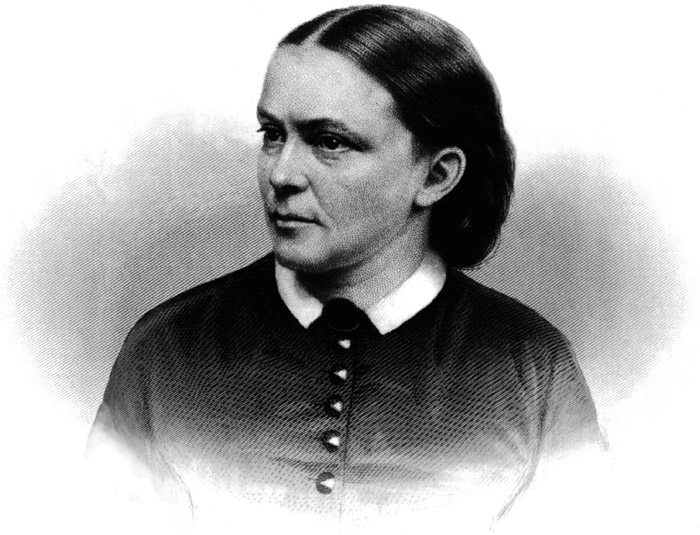Mrs. Cordelia Harvey
The Civil War saw armies of unprecedented size to that point in American history. Consider that Winfield Scott, in the campaign that led to U.S. victory in the Mexican-American War (1846-48), landed at Veracruz with total force between 10,000 and 14,000 troops. That was the size of a corps within the Army of the Potomac or the Army of Northern Virginia. Millions of men fought in the American Civil War. But what most readers may not realize is how women organized to support the war effort. On the battlefields, they served as nurses. But on the home front, they were crucial, both for collecting and dispatching items needed by troops, such as food, clothing, and blankets, as well as for providing crucial services. Women formed and participated in thousands of organizations to achieve these ends, one of the most prominent examples being the U.S. Sanitary Commission (USSC) and its affiliated and constituent societies, which labored to improve the hygiene and medical conditions as U.S. Army camps.
In Chicago, the local affiliate of the USSC was the Northwest Sanitary Commission (NSC). This organization benefitted from the strong leadership of a number of women, including Mary Livermore of Chicago, Jane Hoge of Chicago, and Mary Ann Bickerdyke of southern Illinois. But especially prominent was Cordelia Harvey, wife of Governor Louis Harvey, who became known as “The Wisconsin Angel” and represented the white middle class face of soldier’s relief efforts in Wisconsin during the Civil War (1861-1865). After Louis Harvey died in a tragic accident on the Mississippi River in 1862 near Cairo, Illinois while visiting Camp Defiance, Cordelia Harvey advocated and raised support for Wisconsin’s soldiers during the Civil War. She petitioned Harvey’s successor, Governor Louis Salomon, to name her as the official sanitary agent for Wisconsin. One of her many accomplishments was establishing a hospital for the soldiers in Memphis, Tennessee during the war. 
Together, these strong women formed the backbone of the NSC. One of the many ways they raised the vast amounts of money needed to provide medical and other relief to the soldiers was through fairs such as the Great Northwestern the Great Northwest Sanitary Fair held in Chicago. Sanitary fairs spread to other northern cities as a way to raise money for the services the regional sanitary commissions provided in support of the Union war effort. After the war, these women continued to support Union veterans through their support of the Milwaukee’s Soldier Home, which is now a National Historic Landmark, and other initiatives in support of veterans.
The work of Cordelia Harvey, Mary Livermore, Jane Hoge, Mary Ann Bickerdyke was recorded at the time in many northern newspapers, especially Harper’s Weekly. In 1866, shortly after the war ended, historian Frank Moore (1828-1904) published a volume of biographical essays to celebrate the many women who contributed to the Union war effort, whether they fought in the war in disguise, served as nurses, or organized relief efforts on the homefront. This bright green cloth volume known simply as Women of the War is available for members to view in PMML’s rare book reading room by appointment.
Another beautiful volume on the legacy of these Civil War women is the pictorial memory book for the soldier’s home:
Corbett, Elizabeth Frances, Edward C Caswell, and Edward C Caswell. Out at the Soldiers' Home: A Memory Book. New York: D. Appleton-Century Company, Incorporated, 1941.
To learn more about the activism and contributions of Civil War women, see these circulating volumes available from the Museum & Library:
Hall, Richard. Women on the Civil War Battlefront. Modern War Studies. Lawrence, Kansas: University Press of Kansas, 2006.
Massey, Mary Elizabeth. Women in the Civil War. Lincoln: University of Nebraska Press, 1994.
Silber, Nina. Daughters of the Union: Northern Women Fight the Civil War. Cambridge, Massachusetts: Harvard University Press, 2005.
Schultz, Jane E. Women at the Front: Hospital Workers in Civil War America. Civil War America. Chapel Hill: University of North Carolina Press, 2004.
Or watch this PMML program: Pamela Toler: Heroines of Mercy Street.
